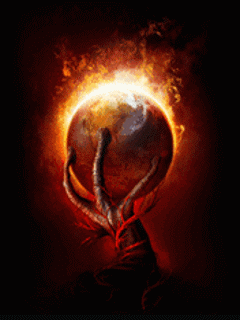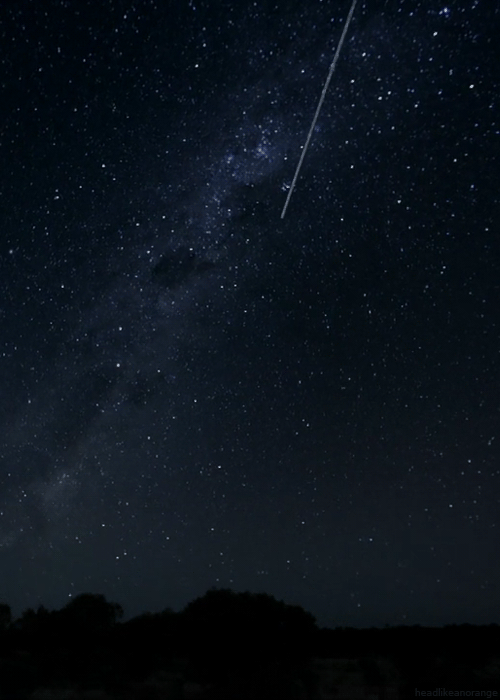Human beings are born fighters -- the fight’s in our blood, and in our bones. We are the very monsters that walk the Earth. Consider for a moment, the ruthless destruction that human beings have wrought, not only upon the wild beasts of the Earth, but also upon our own species. Danger lurks around every corner of the planet we live on. Might it lurk, too, in outer space?
This was the question Orson Welles posed on All Hallows’ Eve in the year 1938. Millions of American people tuned their radio-dials, lusting for news of various happenings in the outside world, which was at the time, teetering on the precipice of World War II. It would be fair to assume that there was already a heightened sense of fear and danger looming in the air. In the 1930s there was only one true source for up-to-date news and information made available to the general populace. On October 30, 1938, radio signals nationwide relayed messages of grave danger and a perilous threat. The broadcast told their mind’s that a huge meteorite had smashed into a New Jersey farm, and New York City, as the story went, was under the imminence of a Martian attack.
The story about the Martian attack was, of course, nothing more than a deliberately fabricated falsehood masquerading as the truth -- it was a big hoax!. What listeners actually heard on the radio that evening was a live broadcast of Orson Welles’ Mercury theater group, performing an adaptation of H.G. Wells classic science-fiction story, War of the Worlds -- published in 1898. War of the Worlds was the first radio play performed by Orson Welles and his theatre group, but other renowned literary works had previously been adapted to the air waves, such as Alexandre Dumas’ The Count of Monte Cristo, and Bram Stoker’s Dracula.
The Broken Bones of Planet Earth: Orson Welles' War of the World



The introduction to War of the Worlds emphasized that the broadcast was based on H.G. Wells famous novel, but many people simply did not hear the introduction, as they were tuned into another popular show at the time. Having missed the introduction to the radio-play, many listeners only heard the music of “Ramon Raquello and his Orchestra," live from New York's Hotel Park Plaza. In reality, though, the orchestra was Welles’ theatre company, and the music they were playing -- in a CBS studio -- would soon be interrupted by a series of increasingly disparaging news bulletins. An astronomer -- played by Orson Welles -- commented on reports of several explosions of "incandescent gas" that had been observed on the planet Mars. Then another bulletin reported that a "huge flaming object" had crashed into a farm in Grovers Mill, New Jersey. The program cut to a reporter describing images of an alien crawling out of a spacecraft: "Good heavens -- something's wriggling out of the shadow," the reporter said, "it glistens like wet leather. But that face -- it … it is indescribable."
In 1938, approximately 7,000 - 8,000 commercial television sets existed in the entire U.S., and live news was not even broadcast on TV -- because there was no market to necessitate it. Newspapers and magazine periodicals were accessible to virtually everyone, but their delivery mechanisms were slow and cumbersome -- as a result of having to bare the heavy of burden of time -- always a day late, as they say. Radio waves were the closest thing people had to the internet before there was one. The width and breadth of the human imagination far exceeded the technological capabilities of contemporary film, so there was no visual precedent for the images described on the radio that day; of a giant alien creature walking through the Hudson River 'as if it were a child's wading pool.' Imaginations ran wild listening to the horrors bred over the air waves about the Martian attack.
Welles and company mimicked the style of ‘real’ news broadcasts of the day, and according to Elizabeth McCloud, a broadcast historian specializing in 1930‘s radio, "some [listeners] heard only that 'shells were falling' and assumed they were coming from Hitler." Thousands of people sincerely believed that the Earth was being attacked by Martian war-ships, and they responded by bombarding newspaper offices and police stations with frantic phone calls. Newspapers reported that many citizens were forced to seek medical treatment as a result of shock and hysteria. Radio historians assert that the hoax was effective, in large part, because of its authentic simulation of the protocols established in broadcasting emergencies on the airwaves at the time. The War of the Worlds broadcast was performed using the same format used to cover the real life meeting between European powers that preceded World War II -- referred to as the ‘Munich Crisis’ -- only a month earlier.
Radio historians now assert that newspaper accounts of the time greatly exaggerated the pandemonium that occurred following the Martian Radio Hoax. Some estimates conclude that only 20 percent of radio listeners actually believed what they were listening to. The day after the broadcast, on the front page of The New York Times, a story claimed that 20 families from one block in Newark, NJ fled their houses with wet towels over their faces to protect them from Martian poison gas. Newspapers had long ruled the roost in regards to the empire over information, and now for the first time, in a long time, there was a scrappy young upstart vying for a shot at the throne. The prevalence of radio broadcasts put a significant dent in the advertising revenue of the newspaper industry. According to Elizabeth McLeod, "the exaggeration of the War of the Worlds story can be interpreted as the print media's revenge for being badly scooped during the previous month.”
Orson Welles War of the Worlds broadcast revealed the powerful influence that mass communication systems -- like radio, TV, and film -- exerted on the perceptions of the general public. Radio held powerful sway over its audiences in those days, especially for people living in rural areas, where air waves served as the primary source of connection to the outside world. Many radio historians conclude that CBS’s broadcast of War of the Worlds significantly diminished the American populace’s trust of the media.
All life on Earth is unified by a shared carbon based chemistry, and if you peer far out across the black velvet sea of space -- where the stars are other suns -- you find the same chemical compounds that exist on Earth. Our little blue and green planet is but a freckle of space-dust in the grand scheme of the Cosmos. Is it so hard to believe that life emerged elsewhere in the Universe, just as it once did on Earth? No one believes anymore -- in the early years of the twenty-first century -- that our planet is being watched keenly and closely by an intelligence greater than man’s own. Does anyone really think that a race of super intelligent beings -- more intelligent than humans -- would go through the trouble of crossing oceans of time just to extend the olive branch of peace? The narrator of H.G. Wells tale, asks the question: “are we such apostles of mercy as to complain if the Martians warred in the same spirit?”
--Hindley Brigham